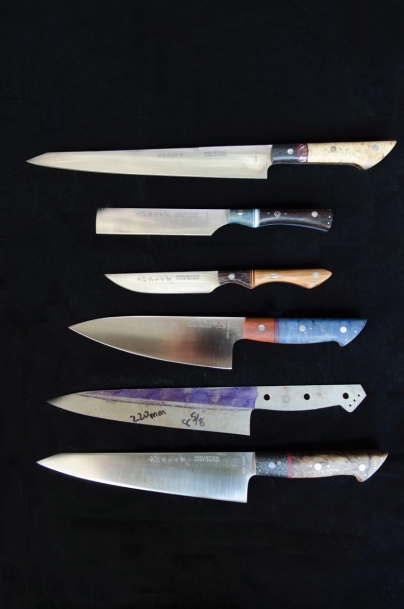Tips from the Knife Doctor
Store your knives in a knife block or with a blade cover. This protects the thin cutting edge and prevents dings, chips and dull spots in the steel. Do not store them in a drawer with other metal cooking utensils unless the blade is protected. Ideally, the best storage at home is in a wooden knife block, which protects the blade and keeps the knife handy for use. Avoid knife blocks with built-in “sharpeners” in the slots.
Use wood, plastic or compressed rubber cutting boards for cutting and food preparation. These are designed to not damage the cutting edge and prematurely dull the blade. Do not cut on ceramic, marble, glass, steel or wood fiber/resin composite boards. These will dull and round-over your knife edges requiring frequent trips to the sharpening stones.
Use “fine” or “extra fine” ceramic rods to touch up the knife edge and avoid steel rods or rods with diamond grit. The steel and diamond rods will remove metal from your blade and create an arc in the cutting edge so that it does not contact the cutting board.
The best way to sharpen a knife is with water stones. These synthetic stones require soaking in water to use and are of defined and uniform grits so you can control how the edge is shaped and sharpened. It takes a few minutes longer, but once you get the rhythm, it is a Zen experience. 1000/6000 grit combination stone is a good all-purpose stone for the home chef.
Want your knives sharpened by a professional knife sharpener? Try Premier Sharpening who come to the farmers markets at Urban Harvest Eastside (3000 Richmond Ave., Saturday 8am-noon) and East End Street Market (2800 Navigation Blvd., Sunday 9am-2pm) or Memorial Villages Farmers Market (10840 Beinhorn Rd., Saturday 9am-1pm).





